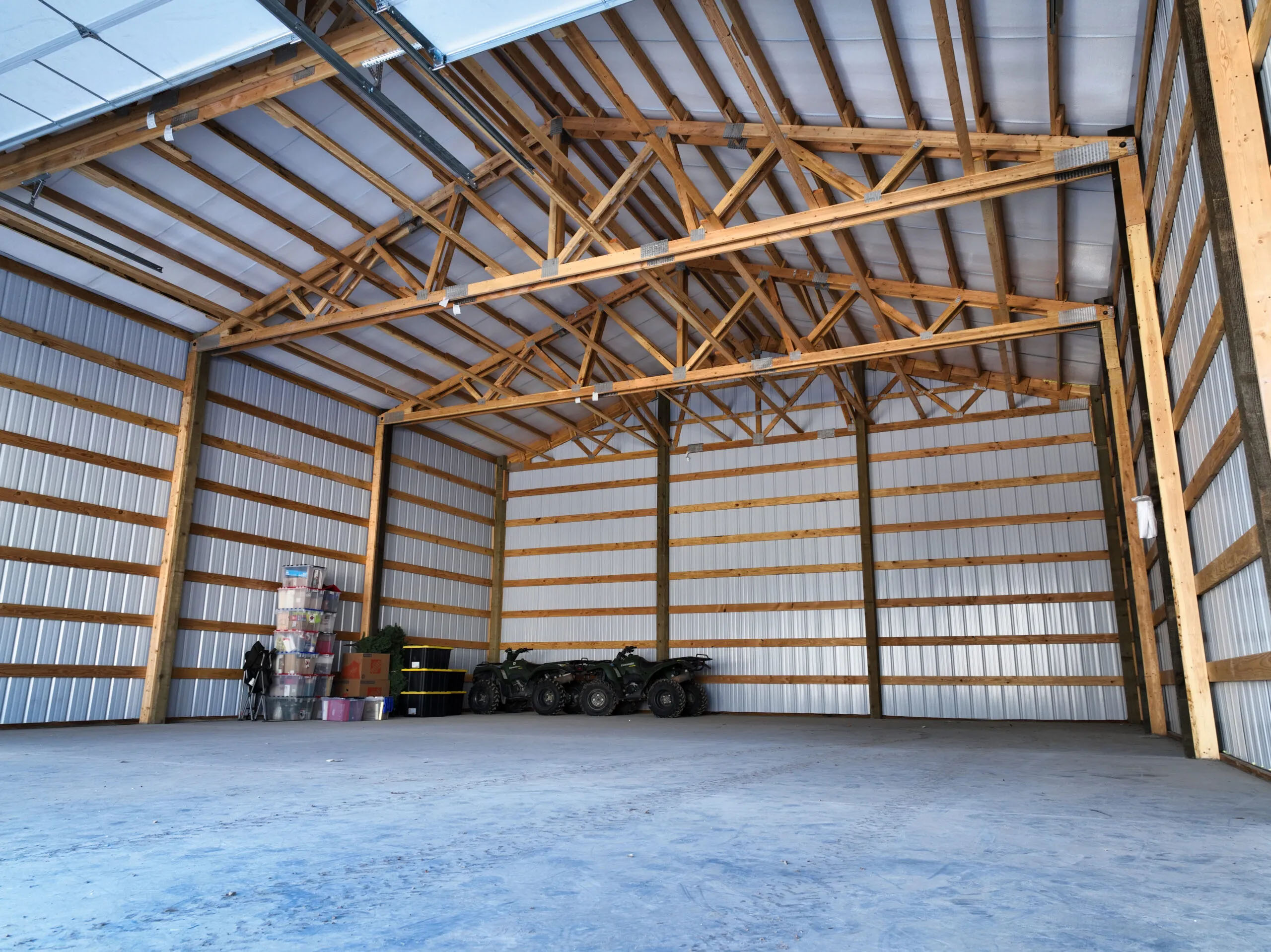In construction, the significance of quality materials and components cannot be overstated. An often overlooked but integral element in construction projects, especially in the creation of pole barns, is the truss system.
Pole barn trusses play a vital role in providing structural integrity, stability, and longevity to these versatile structures.
In this article, we will delve into the importance of quality pole barn trusses in construction, exploring their role, key characteristics, and the impact they have on the overall success of building projects.
The Foundation of Stability
Pole barns, also known as post-frame buildings, have gained popularity for their cost-effectiveness, versatility, and rapid construction. These structures rely on a system of vertical poles embedded in the ground to support the construction’s walls and roof.
The truss system, in particular, serves as the backbone of the roof structure, and it consists of triangular frames that distribute the load evenly, ensuring safety and stability while also preventing sagging over time.
Quality Matters: Durability and Longevity
The durability of a pole barn is directly linked to the quality of its trusses. Quality trusses are typically constructed from high-grade materials such as steel or wood, which are treated to resist decay, insect infestation, and the harsh effects of weather.
These materials not only contribute to the structural strength of the trusses but also enhance their longevity, reducing the need for frequent maintenance or premature replacements.
Additionally, quality trusses are engineered and manufactured with precision, adhering to industry standards and regulations. This meticulous construction ensures that the trusses can withstand the various stresses imposed on them, including heavy snow loads, strong winds, and the weight of roofing materials.
Investing in high-quality trusses is an investment in the long-term reliability and resilience of the entire pole barn structure.
Design Flexibility and Customization
Quality pole barn trusses offer a level of design flexibility that is crucial for meeting diverse construction needs. Whether the purpose of the pole barn is agricultural storage, residential use, or commercial applications, trusses can be customized to accommodate specific design requirements.
Manufacturers provide a range of truss designs, spans, and configurations, including versatile options like 60, 40, 30, and 24 ft trusses. The multiple choice allows builders to tailor the structure to their exact specifications, ensuring that the pole barn meets both functional and aesthetic preferences.
The ability to customize trusses ensures that builders have the flexibility needed to create open, column-free spaces, making pole barns ideal for various uses, including livestock housing, equipment storage, workshops, and even residential living spaces.
Cost-Efficiency and Time Savings
The construction of pole barns is often chosen for its cost-effectiveness and efficiency, and the use of quality trusses further contributes to these advantages.
Engineered trusses are precision-manufactured, reducing the likelihood of errors during construction. This precision not only ensures the structural integrity of the pole barn but also streamlines the building process, saving both time and labor costs.
Additionally, the lightweight nature of trusses makes them easy to transport and handle during construction. This results in quicker assembly times, allowing builders to complete projects faster compared to traditional construction methods.
The combination of cost efficiency and time savings makes pole barns with quality trusses an attractive option for those seeking a reliable and economical building solution.
Energy Efficiency and Environmental Impact
Quality pole barn trusses also play a role in the energy efficiency of the structure. Well-designed trusses allow for efficient insulation, contributing to temperature control within the building.
Proper insulation helps regulate indoor temperatures, reducing the need for excessive heating or cooling, which, in turn, leads to energy savings and a smaller environmental footprint.
Moreover, the use of sustainable materials in the construction of trusses aligns with the growing emphasis on environmentally friendly building practices.
Wood trusses sourced from responsibly managed forests and steel trusses manufactured using recycled materials contribute to sustainable construction. Choosing quality trusses with an eco-friendly focus reflects a commitment to both durability and environmental stewardship.
Conclusion
In the construction industry, quality pole barn trusses stand out as indispensable elements that influence the success and sustainability of a building project.
From providing stability and durability to enabling design flexibility and customization, trusses play a multifaceted role in the construction of pole barns.
The investment in high-quality trusses ensures the longevity of the structure and contributes to cost-efficiency, time savings, and environmental responsibility.
As builders and property owners navigate the complex selection of construction options, understanding the importance of quality pole barn trusses becomes extremely important, and recognizing its significance is a step toward constructing not just buildings but timeless legacies.

